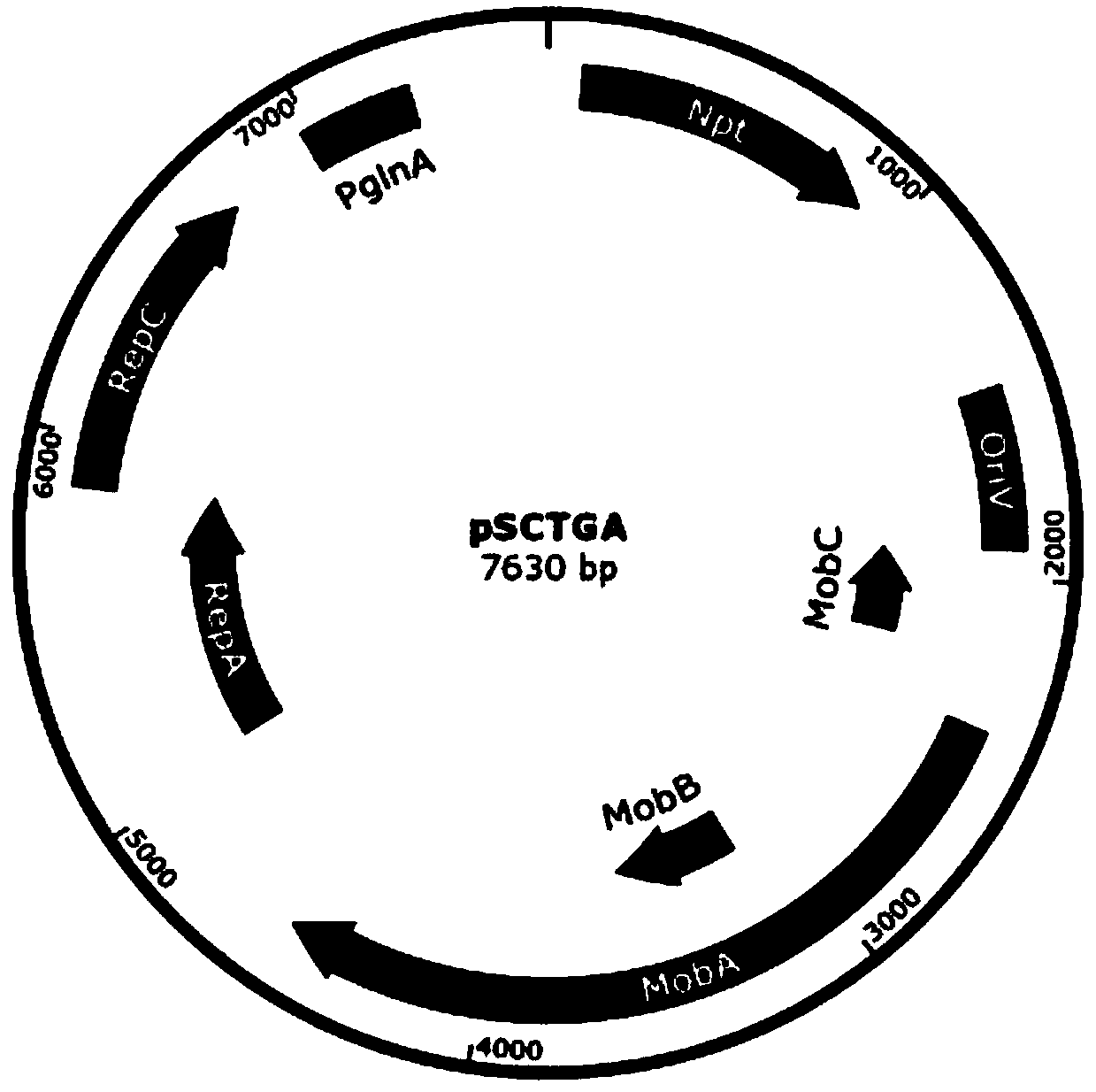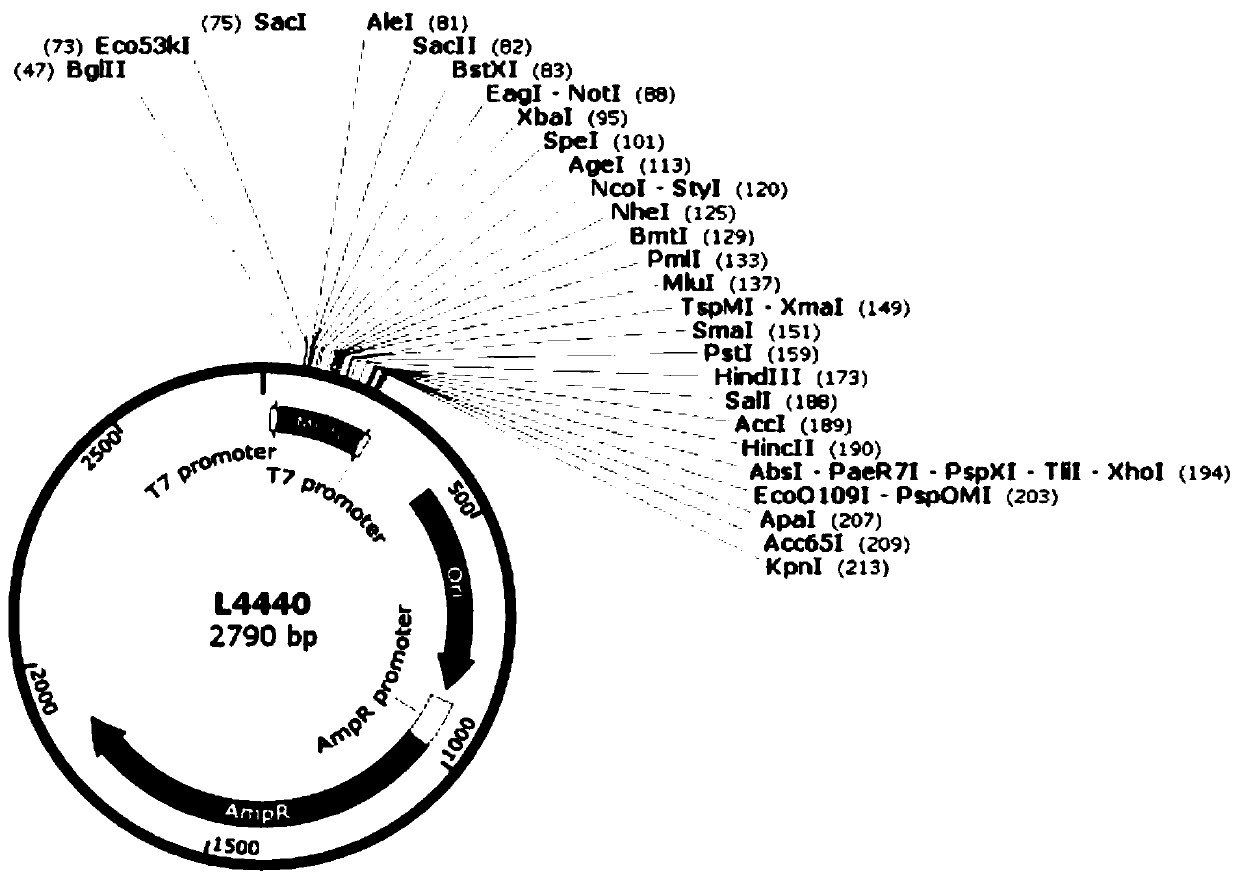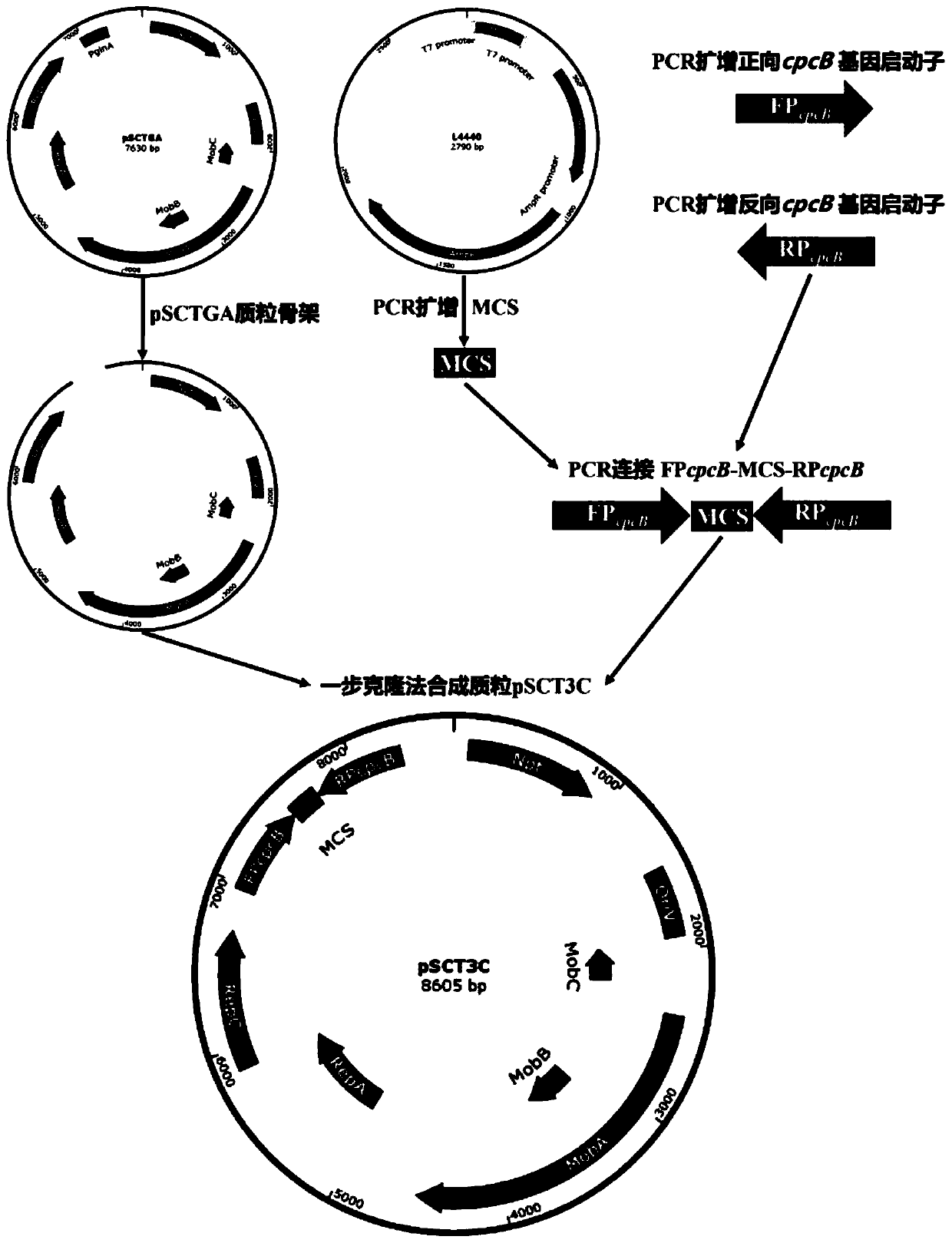Stentor coeruleus RNA interference expression vector as well as construction method and application thereof
A technology of expression vectors and hornworms, applied in the direction of DNA / RNA fragments, applications, recombinant DNA technology, etc., can solve the problems of regulating the expression of foreign genes
- Summary
- Abstract
- Description
- Claims
- Application Information
AI Technical Summary
Problems solved by technology
Method used
Image
Examples
Embodiment 1
[0116] Example 1: Construction of plasmid pSCT3C
[0117] 1. Extraction of Synechocystis PCC6803 DNA by CTAB method
[0118] (1) Add 1mL OD 580 =1 Synechocystis PCC6803 was transferred to an appropriate amount of BG11 medium, placed at a temperature of 30°C, shaking at a speed of 100rpm, and 40μmol photons m -2 the s -1 Cultured under continuous light conditions for 3 days;
[0119] (2) Take 2 mL of Synechocystis sp. PCC6803 in a centrifuge tube, centrifuge at 12,000 rpm in an Eppendorf centrifuge for 2 min (at room temperature), collect the algae precipitate, and discard the supernatant with a 1 mL pipette (product of Eppendorf);
[0120] (3) Prepare CTAB extraction buffer: 2% CTAB + 100mM Tris-HCl + 20mM EDTA (pH 8.0) + 1.4M NaCl + 2% β-mercaptoethanol (ready to use);
[0121] (4) Add 567 μL of TE buffer solution to the algae pellet, pipette repeatedly to resuspend it, add 30 μL of 10% SDS and 15 μL of proteinase K, mix well, and incubate at 37°C for 1 hour;
[0122] (5...
Embodiment 2
[0174] Example 2: Construction of plasmids pSCT3C-Mob1-633, pSCT3C-Mob1-317 and pSCT3C-Mob1-347
[0175] 1. Kit method for extracting the DNA of Trumpeter cerevisiae
[0176] (1) The blue trumpet worm is cultured in a petri dish (90mm in diameter) containing 30mL of MSM medium, at a temperature of 20°C, in a dark environment, and under the condition of supplementing Clostridium longum as food, and grows for 2-3 days;
[0177] (2) The petri dish was placed under a dissecting microscope, and 10 T. cerevisiae cells were sucked into the PCR tube with a mouth pipette for use, and the excess liquid was sucked away;
[0178] (3) For the process of extracting the DNA of Trumpetinus cerevisiae, refer to the instructions of the Shanghai Beiman REDExtract-Amp Tissue PCR Kit kit, dissolve the DNA in sterile Milli-Q water, and freeze it at -20°C.
[0179] 2. PCR amplification of different segments of the Mob1 gene of Trumpeter cerevisiae
[0180] (1) according to the whole genome sequenc...
Embodiment 3
[0212] Example 3: Transfection of plasmids pSCT3C-Mob1-633, pSCT3C-Mob1-317 and pSCT3C-Mob1-347 into Synechocystis sp. PCC6803
[0213] 1. Cell culture
[0214] (1) Culture Synechocystis sp. PCC6803 in 10mL BG11 medium, temperature 30°C, shaking at 100rpm and 40μmol photons m -2 the s -1 Under continuous light conditions, until the concentration of algal liquid grows to OD 580 = 1;
[0215] (2) Escherichia coli DH10B containing plasmids pSCT3C-Mob1-633, pSCT3C-Mob1-317 and pSCT3C-Mob1-347 were cultured in 10 mL LB medium (containing final concentrations of 50 μg / mL Car, 25 μg / mL Cm and 50 μg / mL mL Km), the temperature is 37°C, the rotation speed is 200rpm, and there is no light until the concentration of the bacterial solution grows to OD 600 =1.
[0216] 2. Joint transfer
[0217] (1) Collect 2 mL of Synechocystis PCC6803 and Escherichia coli DH10B in the logarithmic growth phase respectively in a centrifuge tube, centrifuge at 13,000 rpm for 2 min (room temperature), col...
PUM
 Login to View More
Login to View More Abstract
Description
Claims
Application Information
 Login to View More
Login to View More - R&D
- Intellectual Property
- Life Sciences
- Materials
- Tech Scout
- Unparalleled Data Quality
- Higher Quality Content
- 60% Fewer Hallucinations
Browse by: Latest US Patents, China's latest patents, Technical Efficacy Thesaurus, Application Domain, Technology Topic, Popular Technical Reports.
© 2025 PatSnap. All rights reserved.Legal|Privacy policy|Modern Slavery Act Transparency Statement|Sitemap|About US| Contact US: help@patsnap.com



